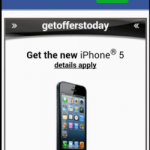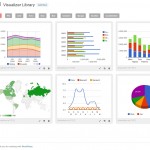Once again we thank you for joining us in another edition of The Daily Plugin, where we lift the lid off of the WordPress Plugin Repository and take a peek at the newest and most recently updated WordPress Plugins. Remember to test your plugins on a staging site before going live. Make sure that all your plugins can party together without causing too much damage. Once you’re good to go, move them over to your live site and get the party started. Also remember that these are not reviews or official endorsements, but observations of what’s new out there that you may want to try out if the subject matter, functionality and layout meets your own individual site needs. OK, let’s get plugged in!
 WPstitial displays an interstitial ad screen when users visit a specific page, or any page within your WordPress installation. An Interstitial ad is often used by the larger content sites such as magazines or media outlets. It is a web page that is displayed before an expected content page, often to display advertisements or confirm the user’s age. Well now it’s no longer just the big boys that get to play in the interstitial sandbox. You too can thrill your readership with full-page ads designed to hide the content for just a few more seconds. I joke about that part, because interstitial ads, when used properly can be a very effective way to market to first time viewers of a web site. Whether it be baiting your readers with requests to follow you on social channels or enticing them with special offers, this plugin provides a platform in which to create easy full-page interstitial ads with the ease of the WordPress content editor. Full shortcode and HTML embedding is allowed on the page, as is a control over how often a person will see. In addition you can simply embed the URL of another site via iFrames. The plugin is also mobile optimized, so you can show the same ads on both platforms, formatted perfectly. Other controls include wait time adjustments and the cycle of ads that is rotated. Overall a good plugin to check out for yourself if you are looking for additional revenue streams for your high-traffic sites or to simply raise awareness of a particular event or campaign.
WPstitial displays an interstitial ad screen when users visit a specific page, or any page within your WordPress installation. An Interstitial ad is often used by the larger content sites such as magazines or media outlets. It is a web page that is displayed before an expected content page, often to display advertisements or confirm the user’s age. Well now it’s no longer just the big boys that get to play in the interstitial sandbox. You too can thrill your readership with full-page ads designed to hide the content for just a few more seconds. I joke about that part, because interstitial ads, when used properly can be a very effective way to market to first time viewers of a web site. Whether it be baiting your readers with requests to follow you on social channels or enticing them with special offers, this plugin provides a platform in which to create easy full-page interstitial ads with the ease of the WordPress content editor. Full shortcode and HTML embedding is allowed on the page, as is a control over how often a person will see. In addition you can simply embed the URL of another site via iFrames. The plugin is also mobile optimized, so you can show the same ads on both platforms, formatted perfectly. Other controls include wait time adjustments and the cycle of ads that is rotated. Overall a good plugin to check out for yourself if you are looking for additional revenue streams for your high-traffic sites or to simply raise awareness of a particular event or campaign.
Only One Category, as the name implies limits the a post to having just one, single checked category. What a blessing! I can’t tell you how many times I’ve checked a category, only to forget to un-check whatever default category was already selected. When this happens it generally puts things where they shouldn’t be and causes headaches having to go back in just to uncheck one little box. Now I’ll never have to again, and neither will you.
 Visualizer is another Google Charts API plugin that allows you to access the on-the-fly chart-making capabilities of Google Charts. Unlike other plugins of a similar theme, this one has all the bells and whistles built right into it, allowing you to create any type of chart that Google Charts offers directly within WordPress. From pie charts to line graphs, dot grids to candlesticks. If there’s data to be illustrated, there’s unlikely to be another source out there with the same capabilities all packed into a single plugin.
Visualizer is another Google Charts API plugin that allows you to access the on-the-fly chart-making capabilities of Google Charts. Unlike other plugins of a similar theme, this one has all the bells and whistles built right into it, allowing you to create any type of chart that Google Charts offers directly within WordPress. From pie charts to line graphs, dot grids to candlesticks. If there’s data to be illustrated, there’s unlikely to be another source out there with the same capabilities all packed into a single plugin.
WP Image Borders helps you easily add or remove custom border effects to your uploaded images. A few shows back on WordPress Plugins A-Z, a gentlemen left us an audio comment asking for an alternative for a Drupal module called “ImageCache”. I was never into Drupal, but this feature was quite amazing, allowing on-the fly image formatting and editing, including orientation correction, color adjustments, bevel, shadows, glow and many other effects that we often have to do offline at a time-consuming rate. While on the hunt for an answer to our listener’s request, I came across something similar that was just released in the Repository called WP Image Borders. While it’s nothing like the aforementioned ImageCache capability, it does provide some of the same “on-the-fly” image processing power. If you want to add drop shadows to all your images or make them round cornered, this is a good plugin to do that. It will not alter the original image and turning off the plugin will simply revert all your old images back to their original styles. Would love to see what people out there can create with this!
Simple Donation Manager assists in recognizing those who have contributed to the cause, no matter what that might be. The plugin uses a shortcode based system that displays donors and beneficiaries for a particular cause or fund-raising drive. So not only will it list out who donates, but it can list out who receives the help as well. While not quite Kickstart quality, this has a lot of uses for non-profit and charitable organizations out there who have the need to display such information with the ease of a shortcode. Full contact info can be used, including their method of payment for the donation.
That’s it for this edition of The Daily Plugin. Join us again tomorrow as we dig into the deepest chasm of the WordPress Plugin Repository in search of hidden resources and new gems to behold.
Only One Category
Mostly, primarily, I highly value being able to assign a post etc to more than one category. Many things naturally ‘belong’ in different categories … and there is even a game or trip, in which one deliberates crafts content to straddle different worlds/levels (photo-composition is wonderful for this).
However, I would also very much like to have an ‘unimpaired’ hierarchical categorized URL (aka ‘permalink’). It is much easier & better that each post have a “unique” category, if the category-hierarchy is going to build the link (‘breadcrumb’-fashion).
If WordPress officially decided to offer the option of a ‘clean’ category-permalink (without the ’empty’ or placeholder hierarchy-level), I would then be ‘hard up against it’. ‘Uh-oh … decisions, decisions.’ But as it stands, the official option is unattractive, and easy to decline.
Ideally, we might have a Primary category for each post, and then any number of Secondary category assignments as well. In any situation where a post should have “a” or “the” category, the primary assignment would be used, and the others ignored. But we’re not holding our breath for anything along these lines.
Those who do like to use multiple categories, but would also like to have category-URLs (the 2 do seem to run together…), could shift to unique categories and then partially compensate by making heavier use of Tags. And tags can also benefit from enhancements, theoretically from WP HQ, and pragmatically through various plugins. Tags are a less ‘touchy’ entity than categories, and better-suited to 3rd-party modifications. We can ‘play’ more with tags, without sticking our neck out as much as with categories.
But no – I’m not going to do Only One Category at this time.